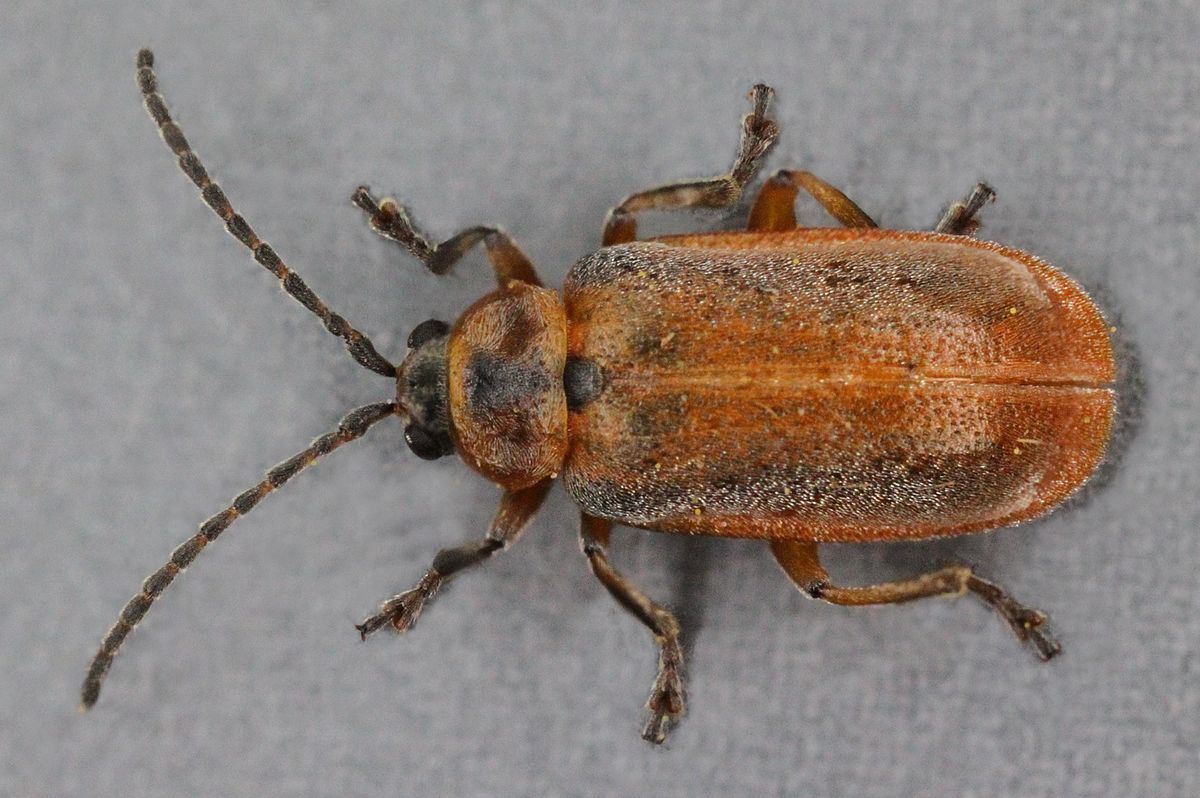
Galerucella calmariensis (Black-margined Loosestrife Leaf Beetle) is a leaf beetle (family Chrysomelidae), native to Eurasia. It was introduced to North America as part of a biocontrol program for the wetland plant Purple Loosestrife (Lythrum salicaria), which is now widespread in North America and considered a problematic invader. This program, under the auspices of the Agricultural Research Service of the United States Department of Agriculture (USDA-ARS) and the United States Fish and Wildlife Service (USFWS), began with a study of insect herbivores which control L. salicaria in Europe. Four species of beetles, including G. calmariensis, G. pusilla, Hylobius transversovittatus, and Nanophyes marmoratus were released in freshwater wetlands across the United States, with the intention of attacking the leaves, roots and seeds of the plant. The two species of Galerucella are similar in their life history, producing one or two generations per year. Both can defoliate Purple Loosestrife plants when abundant. Between 1993 and 1996, millions of G. calmariensis and their congener G. pusilla were released in at least 30 states and 3 provinces, including wetlands in Chesapeake Bay, Delaware Bay, the Hudson River, Connecticut River, the Columbia River and Coos Bay and many smaller wetland areas too. The goal of the Purple Loosestrife biocontrol program was not eradication, but reducing the dominance of L. salicaria and restoring diversity in wetlands. This biocontrol program is considered largely successful.